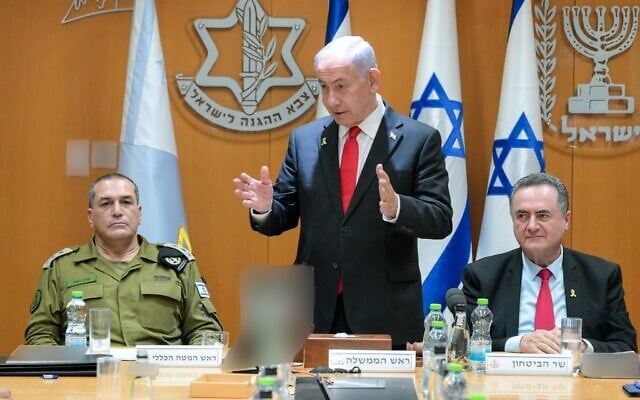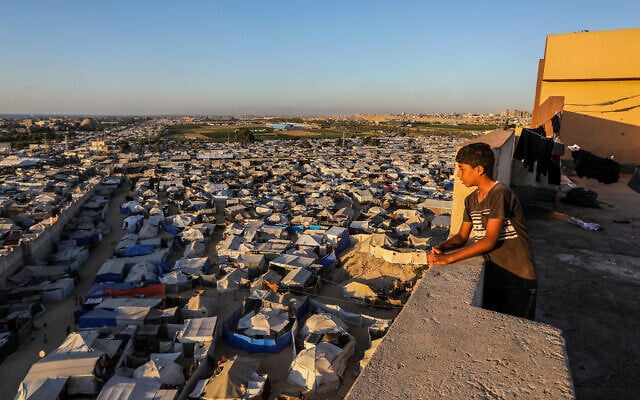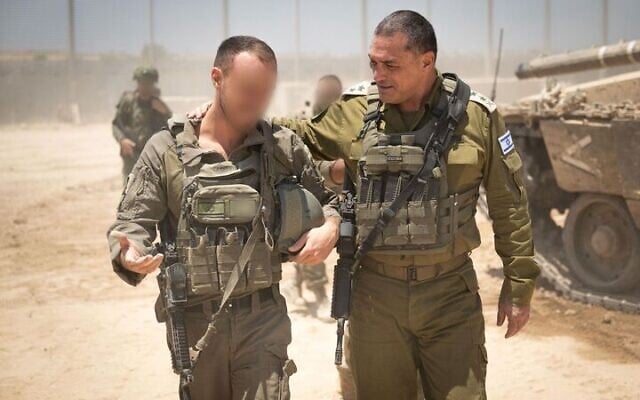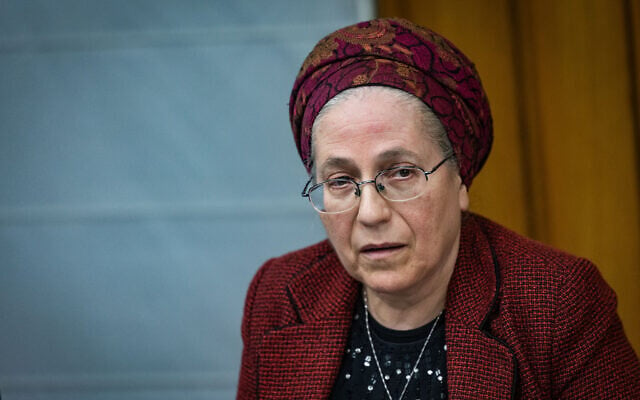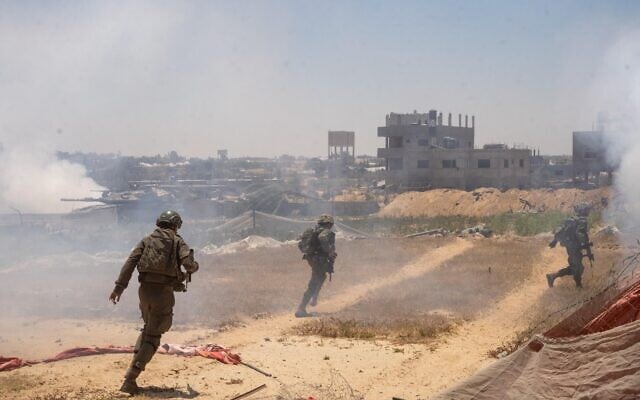


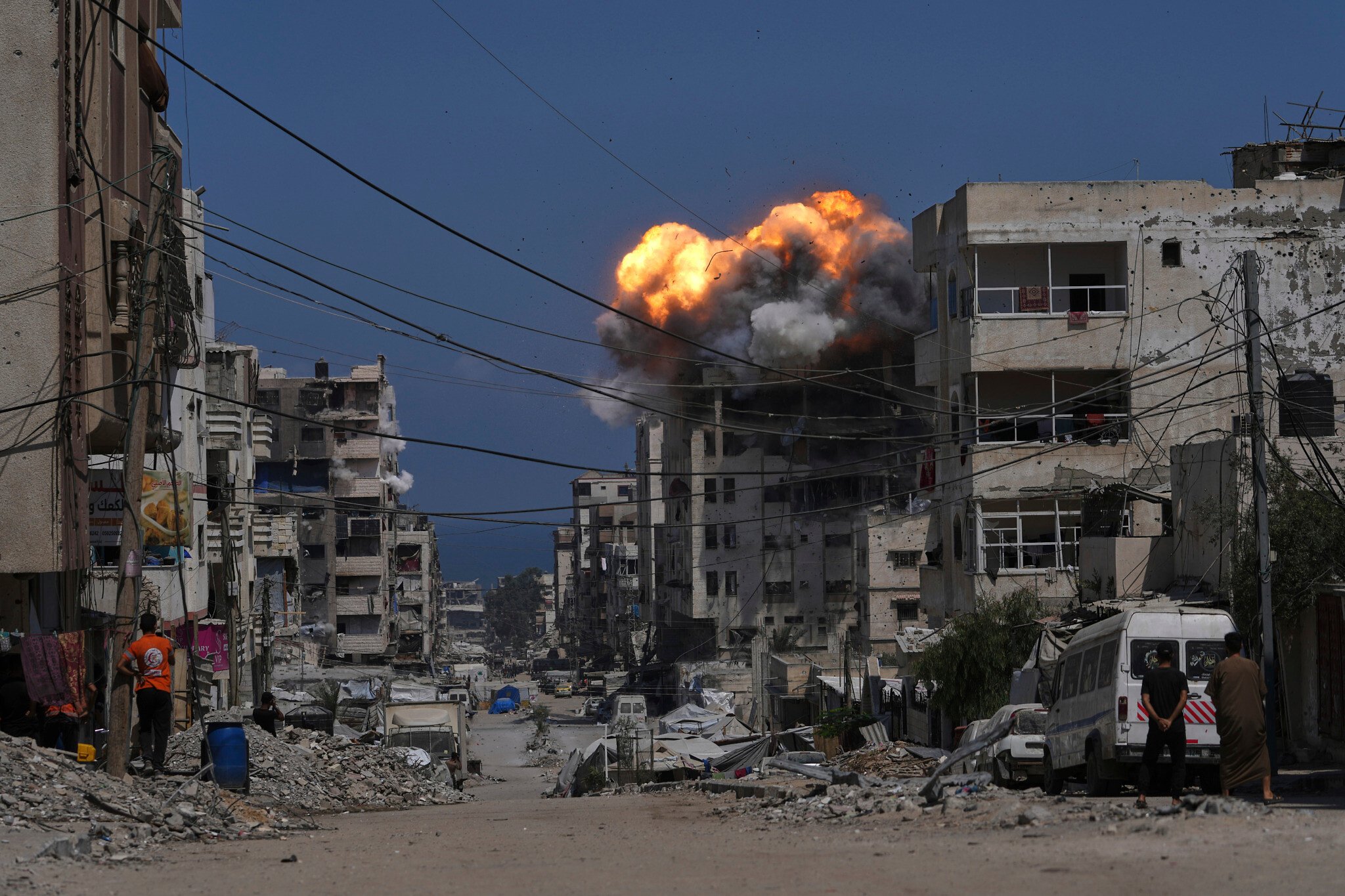
Israel’s military chief has reportedly suggested that the army could step up its offensive in Gaza, seizing more territory in order to wear down the Hamas terror group, rather than pursue a controversial plan to push hundreds of thousands of Gazan civilians into a “humanitarian city” on the Strip’s southern edge.
The Channel 12 news report quoted sources familiar with the proposal describing it as a plan “for taking over Gaza,” widening the Israel Defense Force’s hold on the territory beyond its current control of around 75 percent — a goal previously set by the government for an ongoing offensive begun in May.
The report did not say how much more territory IDF Chief of Staff Lt. Gen. Eyal Zamir proposed taking.
It came as talks for a ceasefire and hostage release agreement remained mired in disagreements, with negotiators reporting slow progress on key issues, even as some broadcast optimism for a breakthrough.
According to Channel 12, Zamir told ministers at a recent meeting that the plan would involve the army capturing and holding an increasingly larger chunk of the Gaza Strip, with a gradual takeover aimed at pressuring Hamas to agree to a ceasefire and the release of hostages.
The report described the proposal as an alternative to a controversial “humanitarian city” in Rafah pushed by Prime Minister Benjamin Netanyahu, which would involve confining Gaza’s civilians in an area built over the ruins of Rafah in the far south of Gaza while the army attempted to root out pockets of Hamas-led fighters throughout the enclave.
Zamir is said to oppose the “humanitarian city” idea, which Israeli officials have said could be implemented if ceasefire and hostage talks collapse, or should fighting resume following the 60-day truce under discussion. How the war would end and the contours of the IDF withdrawal from Gaza during the truce are key sticking points in negotiations.
The alternate takeover plan received very positive responses from ministers who were shown it by Zamir, Channel 12 news reported, without citing a source.
Netanyahu’s right-wing flank insists the war must continue until Hamas is completely destroyed, following the terror group’s October 7, 2023, onslaught, in which some 1,200 people were killed in southern Israel and 251 kidnapped.
The IDF sees the plan as better enabling two war goals — returning the hostages and eradicating Hamas — than the humanitarian city plan, according to the outlet.
An army spokesperson declined to comment on discussions held in closed-door meetings.
However, it added, citing unnamed cabinet sources, that Netanyahu shut down any discussion of the proposal, fearing it could derail ceasefire talks.
The Israel Hayom daily also reported that Netanyahu blocked further discussion of the matter and prevented Zamir from presenting the proposal to the full cabinet.
Sources told the newspaper that Netanyahu was continuing to pursue the “humanitarian city” plan.
Zamir has expressed serious reservations about that plan, which was proposed by Katz, Channel 12 reported last week.
Zamir reportedly told a high-level briefing that it is “unworkable” for Israel to build on the ruins of Rafah in a way that would eventually house all of Gaza’s civilians.
The zone would first accommodate some 600,000 Gazans living in the Mawasi area on the coast, and later would contain the enclave’s entire population of more than 2 million, according to the plan.
Zamir said Sunday that the military had presented the political leadership with several courses of action for the continued offensive against Hamas in the Gaza Strip.
“Your operational achievements here — eliminating terrorists, destroying infrastructure above and below ground, capturing and clearing vast areas — will enable us to bring about a shift in our operational patterns,” Zamir said to troops during a visit to Gaza City’s Shejaiya neighborhood, according to remarks provided by the IDF.
Zamir said the IDF will “implement new operational formations that will enhance our strengths, reduce our vulnerabilities, and deepen operational gains. These will increasingly pressure Hamas and reduce the erosion of our forces.”
“We have presented the options to the political leadership, and we will stabilize the situation according to our interests,” he said.
During his tour, Zamir met up with his son, who is serving as an officer in a tank unit. The IDF published a photo of the two together.
The army has already indicated it could expand operations to new parts of Gaza, issuing an evacuation warning Sunday for Deir al-Balah in the center of the Strip — the first time the army has threatened to send ground troops into the area since war broke out 21 months ago.
The army is thought to have previously avoided the area due to the suspected presence of hostages who could be harmed in the fighting.
Settlements and National Projects Minister Orit Strock, a member of the far-right Religious Zionism party, said Monday that the army should expand operations in Gaza regardless of whether it might endanger hostages.
“There needs to be a great effort to not harm the hostages who are there, but it is not correct to avoid defeating Hamas there,” she said, adding that the terror group is using those areas to launch attacks on IDF soldiers and rocket fire at Gaza border communities.
Her comments drew condemnation from the Hostage and Missing Families Forum, which said in a statement that Strock was “sacrificing the hostages along with the values on which Israel was built.”
“Strock is gambling with the fate of the hostages and normalizing their being held in captivity,” the forum said, labeling the minister “a stubborn obstacle” to saving the hostages.
Strock has in the past stated opined that victory over Hamas is more important than the return of all the hostages.
The Religious Zionism party and fellow far-right faction Otzma Yehudit both oppose ending the war in a ceasefire deal and advocate for continuing to fight until Hamas is eradicated, along with a full Israeli takeover of Gaza to enable the establishment of Israeli settlements in the territory.
Israeli and Hamas negotiators have been taking part in indirect truce talks in Doha since July 6, discussing a US-backed proposal for a 60-day ceasefire that would see the release of 10 hostages and the remains of 18 slain captives — a deal the Forum, which calls for a release of all hostages in one stage, has criticized.
Subsequent negotiations would be held during the 60-day truce regarding the terms of the permanent ceasefire that is supposed to come into effect afterward. Once that permanent ceasefire is reached, the remaining 22 hostages will be freed, according to the terms of the deal under discussion.
US President Donald Trump Friday suggested Friday that a deal could soon be at hand, optimism echoed by an Israeli officials who said a deal could be reached within days.
The October 7, 2023, onslaught saw thousands of Hamas-led terrorists storm southern Israel to kill some 1,200 people and take 251 hostages.
Terror groups in the Gaza Strip are holding 50 hostages, including 49 of the 251 abducted by Hamas-led terrorists on October 7, 2023. They include the bodies of at least 28 confirmed dead by the IDF. Twenty are believed to be alive and there are grave concerns for the well-being of two others, Israeli officials have said. Hamas is also holding the body of an IDF soldier killed in Gaza in 2014.
The Hamas-run Gaza health ministry says more than 58,000 people in the Strip have been killed or are presumed dead in the fighting so far, though the toll cannot be verified and does not differentiate between civilians and fighters. Israel says it has killed some 20,000 combatants in battle as of January and another 1,600 terrorists inside Israel during the October 7 attack. Israel’s toll in the ground offensive against Hamas in Gaza and in military operations along the border with the Strip stands at 454.

